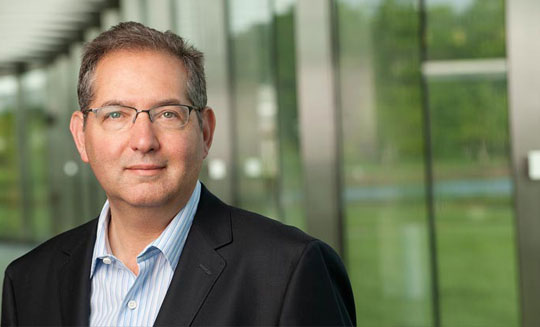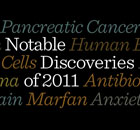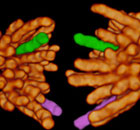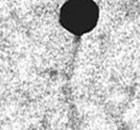
Q&A: Rosenfeld on the Science of Storytelling
After more than two decades at National Geographic as a supervising writer, producer, executive producer, and production company president, Michael Rosenfeld was named head of HHMI’s new film production unit in May 2011.
HHMI launched the $60 million, five-year film initiative in February 2011 to produce original science documentary films for broadcast, theatrical release, and digital distribution. A series of short-form films and materials for science educators will be produced in tandem.
Q: What drew you to HHMI?
A: I had been at National Geographic for 22 years, and I was ready to do something new. This is really a startup, and startups are just great fun. And I think anyone who is involved in science media or science education shares a concern about the level of discourse about science in our society. This seemed like an opportunity to make a contribution to improving that discourse, which was pretty irresistible.
Q: Do you think documentaries can change how the public views science?
A: I think popular documentaries that a mass audience will sit down and watch are a great vehicle for explaining science. At the same time, I think if you really want to have an impact, documentaries need to be part of a bigger effort. That’s why the link between the documentaries that we produce and the short educational films that go into the classroom is so important.
Q: Do you have a favorite film or television project that you’ve worked on?
A: The projects that have been most satisfying over the years delve deep into science and scientific ideas while also entertaining a mass audience. Television is inherently an entertainment medium, and it doesn’t do you much good to produce a brilliant science film that no one watches. One project that stands out was Strange Days on Planet Earth, a conservation science series hosted by Edward Norton. It combined, in my humble opinion, great storytelling, a contemporary flair, and brand new, quite sophisticated, science.
Q: What have you learned about how to make science into compelling television?
A: The ingredients are familiar to anyone who has ever tried to tell a story. You need a great yarn, you need great characters, and you need a certain amount of suspense. Fortunately, the world of science is full of great stories. Scientists are often attempting to do things that are extraordinarily difficult, and I think a good science film is one that captures the essence of that struggle and makes it understandable.
If you look at the way science is presented in the media, often the actual science is in a black box. You know what happens at the beginning, and you get the results at the end, but you don’t know what happens in the middle. That is the heart and soul of the scientific process.
One of the challenges is taking viewers into that black box, showing them what really happens, and making it understandable, which is difficult given how technical and complex much of science is today. But I think a good storyteller finds the compelling narrative in the scientific process because at heart science is about solving a mystery, which is one of the oldest narrative devices.
Q: What is your vision for the film production unit?
A: First of all, we want to produce great science documentaries that elevate the level of discourse about science and create a lasting impact. When you talk to people about science documentaries it doesn’t take very long for someone to evoke the famous Cosmos series or the Ascent of Man. Those series were produced decades ago, but they continue to have an impact.
My hope is that our projects—maybe not all of them, but many of them—will have that lasting impact and make a lasting contribution to the way we think about science.
I would also like our unit to be a kind of laboratory for incubating new ways to tell science stories on television. If we can demonstrate to the rest of the broadcast community that science television can really be innovative, can really be substantive, and can really get a large audience, then maybe we can have an impact on the way other producers and broadcasters think about the potential of science. And that would be a lasting legacy.



